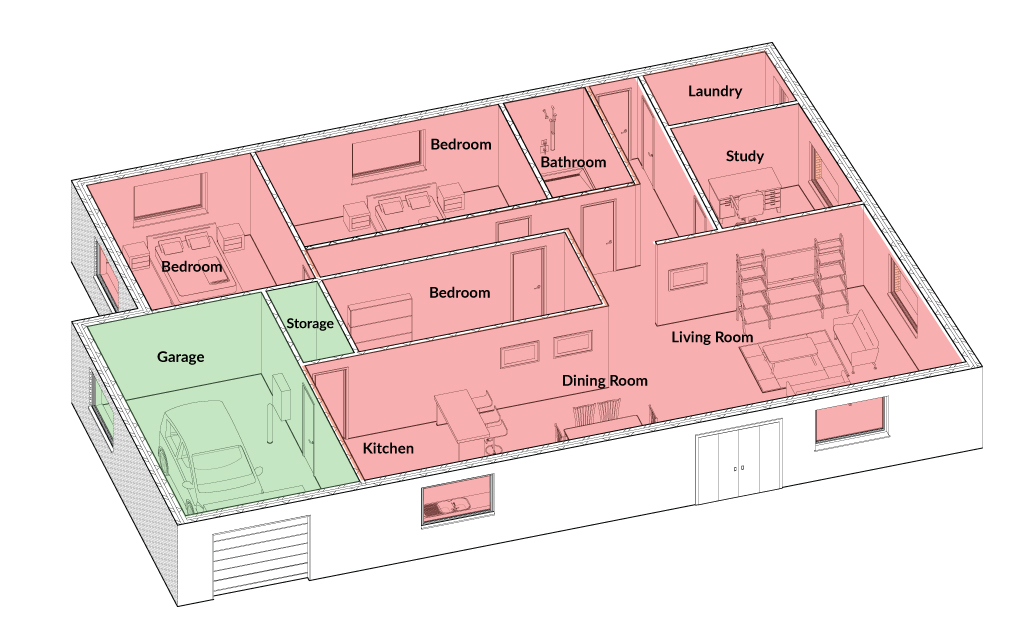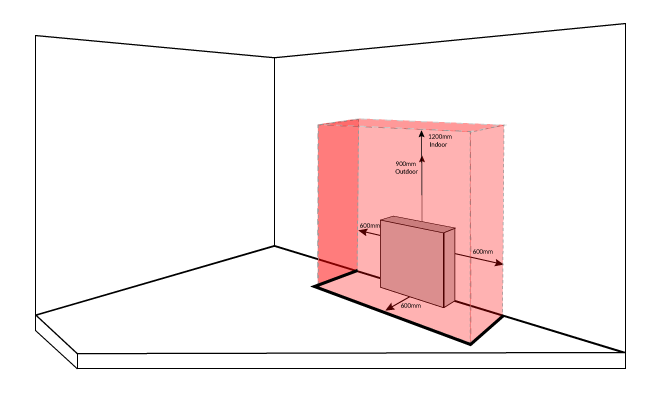Safety requirements for installing Battery Energy Storage Systems
With the improvement in technology and decrease in costs, Territorians considering installing a solar PV system, or who already have a system installed are also considering Battery Energy Storage Systems (BESS) to store the energy generated.
This information bulletin has been developed to help home and business owners understand the safety requirements for installing BESS in order to reduce the risk of fires and other associated hazards.
What are the hazards?
Batteries are devices stores chemical energy that converts to electricity. A BESS installed incorrectly, malfunctioning or damaged can potentially cause:
- Arc flashes
- Electric shocks
- Fires and/or explosions
- Leaks and exposure to hazardous chemicals.
Managing the risk
Installers licence and accreditation
Contractors installing Solar PV Systems, including BESS’s require:
- Clean Energy Council accreditation; and
- A valid electrical contractor’s licence.
Only use contractors who have both accreditation and a valid licence to install your solar PV system and/or the BESS.
You can check a contractor’s accreditation on the Clean Energy Council website, and the contractor’s licence on the Electrical Workers and Contractors Licensing Board website.
Installation location
While it is tempting to install the BESS an out of sight location in your home or business, the installation locations plays an important part in how safe your BESS is, and restrictions apply on where a BESS can be installed.
Before installation begins, read the BESS installation manual to know where and how your BESS can be installed. There are different battery types currently on the market with some batteries requiring wall mounting and some only floor mounted, some can only be installed indoors or outdoors.
Don’t just rely on your contractor to do the right thing, educate yourself so you know the location chosen is suitable before installation begins.
Restricted rooms in the home
For home owners, a BESS cannot be installed in a room which you or your family uses for normal living activities (also known habitable room). These rooms include:
- Bedroom
- Living room
- Lounge room
- Kitchen
- Dining room
- Study
- Family room
Other restricted locations in the home and workplace
Other locations a BESS cannot be installed in include:
- In ceiling spaces or wall cavities;
- Under stairs ways, access walk ways and floors of habitable rooms;
- On top of roofs;
- In areas with a switchboard or generation system; and
- In an evacuation or escape route.

Other non-suitable locations
Although bathrooms and laundries are considered non-habitable rooms, they are not a suitable location for a BESS installation due to the rooms being a ‘wet area’. This recommendation is in line with clause 6.2.4.7 of Australia Standard AS/NZS 3000:2018.
BESS clearance zone
Your contractor is required to install your BESS with a clearance zone for safety reasons. The zone extends 600mm either side and to the front of the BESS, and 900mm above.

Your contractor cannot install the BESS in the location selected, if one of the following is in the clearance zone:
- any exit of the building, including garage doors;
- windows, building ventilation or opening into a habitable room; and
- an electrical appliance not associated with the BESS, such as a washing machine, air-conditioning unit or hot water system.
Fire protection barrier
Your contractor cannot install the BESS on or against a wall or structure that has a habitable room on the other side without a fire protection barrier, if the wall or structure is made of combustible material such as cladding, timber or gyprock plasterboard etc.
A fire protection barrier is to prevent potential fires from the BESS, burning through a wall or structure and spreading into the habitable room. The barrier needs to be installed between the BESS and the wall or structure.

The barrier needs to be the same dimensions as the BESS clearance zone, 600mm either side and 900mm above the BESS, and made from material considered non-combustible in accordance with the Australian Standard AS1530.1 Methods for fire testing on building materials, components and structures, Part 1: Combustibility test for materials. The barrier must also be solid without any vents or holes.
Walls or structures made from brick or masonry block, concrete, compressed cement sheeting or tiled with ceramic or terracotta tiles are not considered combustible and do not require a fire protection barrier.
Other installation considerations
Choose an installation location which:
- Provides adequate access for electrical wiring.
- Does not put the BESS in a location that can flood or be splashed with water.
- Keeps the BESS out of direct sunlight, which reduces the risk of overheating.
- Is not mounted on the inside of an uninsulated wall that gets direct sunlight.
- Is not next to a heat or ignition source (i.e. an in built BBQ).
- Is not in an area used to store gas bottles or other combustible materials.
- Does not put the BESS at risk of being hit by something and damaged (i.e. vehicles in a carport, or trollies or pallet jacks in storage rooms).
Certificate of compliance
Once your BESS installation is completed, your contractor is required to give to you a completed electrical safety - certificate of compliance (CoC). The CoC is a form of warranty that the installation work for the BESS and other electrical work has been completed to Australian Standards and is safe for use.
Getting help
If you have concerns about your BESS installation that you contractor hasn’t adequately addressed, contact NT WorkSafe’s Electrical Safety Team on 1800 019 115 or email ntworksafe@nt.gov.au.